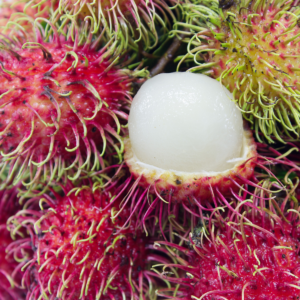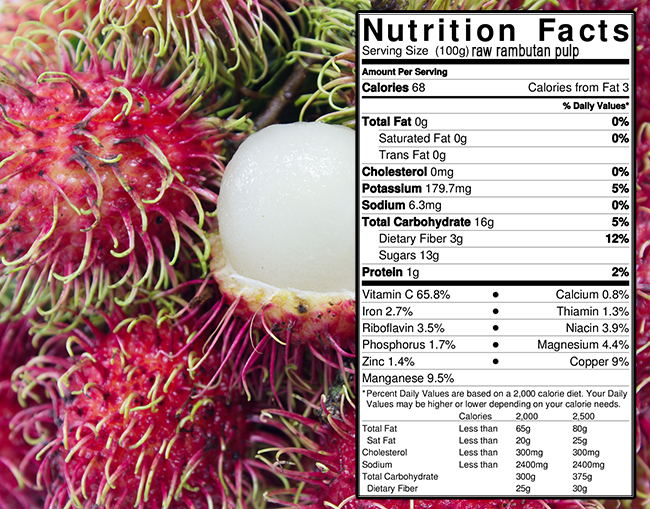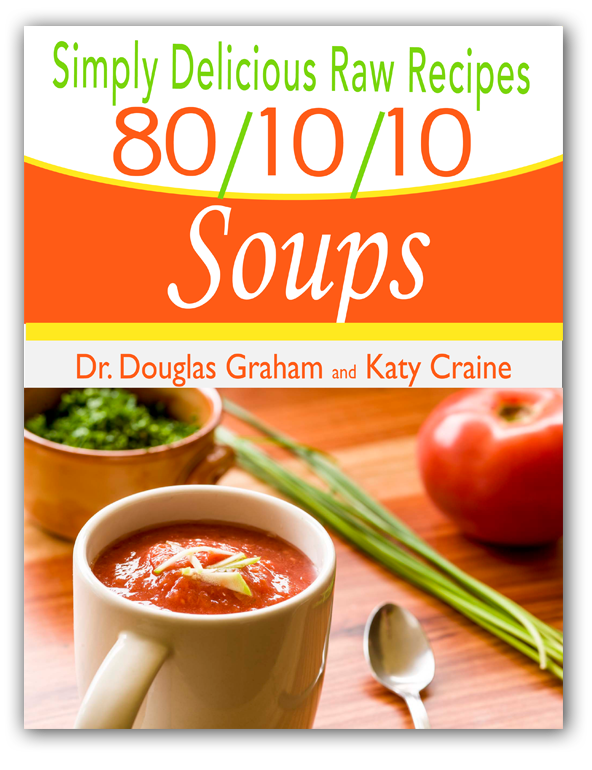
Want to try these funny-looking fruits but not sure what to do with them? Here’s a guide to buying the deliciously sweet rambutan, nutrition facts, and a recipe for an exotic salad.
What is a Rambutan?
These Southeast Asian fruits are about the size of
a plum with a thick, leathery skin covered in the long, curling, flexible hairs that give the fruit its name. “Rambut” in Malay means “hair.” In Thai, the fruits are called “Ngoh,” referring to the curly hair of aboriginal people of the Southern peninsula. In Vietnam, they’re known as “chô chô,” meaning “messy hair.”
Peeling those messy hairs reveals an oval, white or pale pink translucent fleshy fruit that is often so juicy it drips as you open it. The flavor is reminiscent of a grape and the fruit has a pleasant, spicy aroma caused by compounds found in vanilla and cinnamon.
Health Benefits
100 grams of rambutan flesh contains 68 calories, 10% the RDA of manganese, 4% niacin, and 3% iron.
Traditionally, rambutan fruits were believed to have anthelmintic properties, helping one eradicate intestinal worms and relieving diarrhea. They were avoided when suffering from a sore throat or cough, as woody flakes from the seed coat have a tendency to stick to the edible flesh, and may cause irritation in the throat or esophagus.
Where to Get Rambutans
From relatively recent obscurity, rambutans are quickly joining mainstream fruits on supermarket shelves around the world. In Australia, rambutans can be found at Woolworth’s and at Sainsbury’s in the UK. In the US, they’re still most commonly sold at Asian grocers but have made inroads at specialty produce stores and Whole Foods.
Although 90% of the world’s rambutans are grown in Southeast Asia, in the last decade they’ve seen a huge leap in popularity in Central and South America. They can be found between July and September and are known as “Lichas” or “Mamón Chino” — which translates as the “Chinese sucker” because you can pop the whole fruit in your mouth.
How to Select and Prepare Rambutans
There are over 200 varieties of rambutans in shades ranging from red to yellow, but for now only the red fruit is exported abroad. Select deep red rambutans that are still attached to the branches as these stay fresh longer. Rambutans do not ripen after being harvested, but decay quickly. Darkened or dried hairs are a sign that the fruit is not fresh-picked, and may have begun to ferment within — some people like them this way. Fruits that have black spots on the skin are most likely rotten inside and inedible.
It’s tempting to use your teeth to bite through the leathery skin; however, this is discouraged due to possible pesticide use. Instead, use a knife or thumbnail to make a small incision and then, grasping the fruit with two hands, twist it open. Watch out for the juice, which can be very sticky! Pop the rambutan in your mouth and suck away the soft flesh.
Rambutans are most often eaten fresh as a snack or sweet treat, but they are also great frozen and blended into a sorbet or chopped as an addition to salads.
Ingredients:
15 rambutans, peeled, deseeded and roughly chopped
6 mandarin oranges or tangerines, peeled and broken into segments
1 head romaine lettuce hearts, shredded or chopped
3 tbsp fresh orange juice
½ lime, squeezed
Mint to taste
(optional) ½ tsp fresh ginger, diced
Directions:
- Prepare a bed of crisp lettuce.
- Blend orange juice, lime juice, ginger and mint.
- Pour over lettuce and mix well.
- Gently toss in rambutan and citrus chunks.
- Garnish with mint and enjoy!








